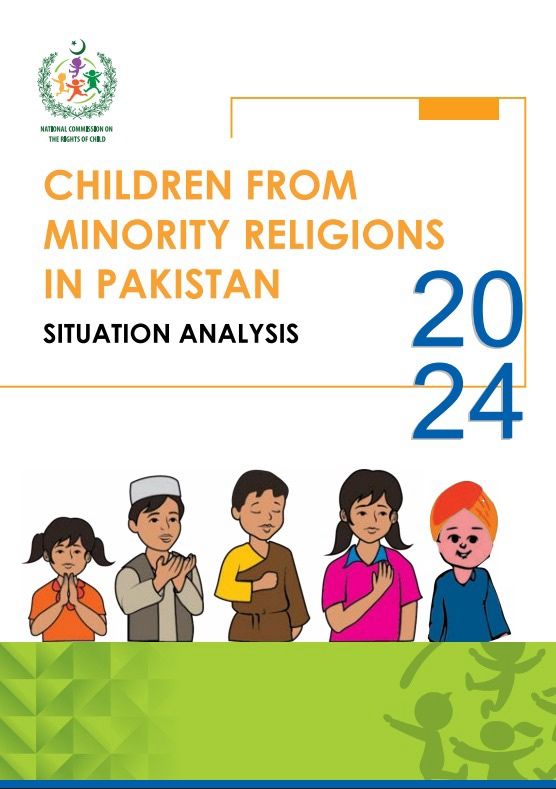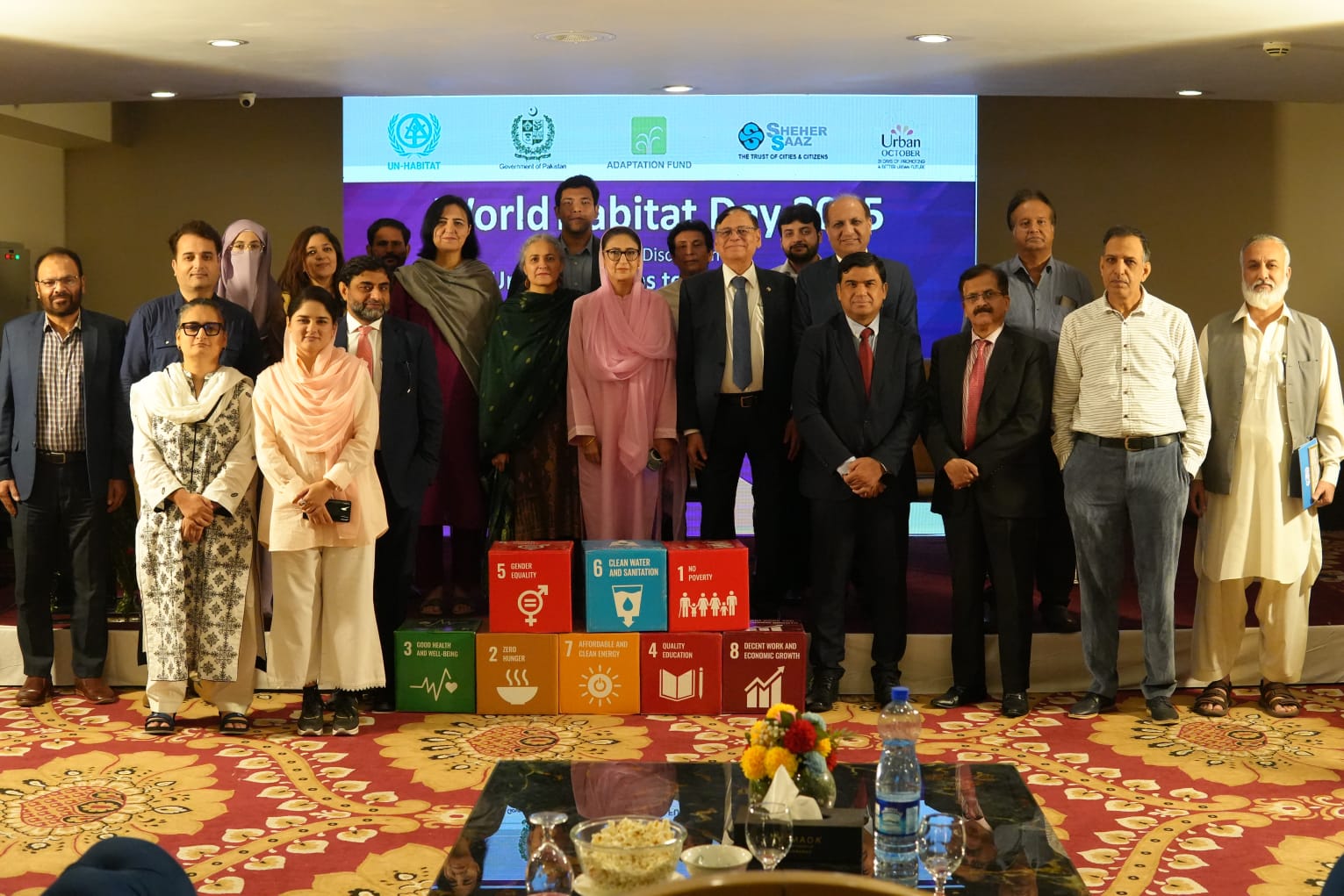Introduction

The national Commission on the Rights of the Child (NCRC) has published a report Children from Minority Religions in Pakistan: Situation Analysis 2024 recently.
The report highlights how minority children in Pakistan—particularly those from Hindu, Christian, Sikh, Ahmadi, and other marginalized religious communities—face overlapping forms of discrimination rooted in religion, caste, gender, class, and geography. These intersecting disadvantages result in systemic exclusion from education, protection, and economic opportunities. The study adopts an intersectional lens to document how these factors interact, producing compounded vulnerabilities that hinder children’s development, dignity, and rights.
Here we are providing a summary of section 4 that highlights the issues faced by minority children, and section 5 that lists recommendations.
Intersectionality and the Situation of Minority Children
Intersectionality as an Analytical Lens
The concept, rooted in Black feminist and critical race scholarship, examines how multiple identities—such as religion, caste, gender, and socio-economic status—interact to produce unique forms of disadvantage. In Pakistan, minority children experience these disadvantages simultaneously, resulting in pervasive exclusion from mainstream opportunities and institutions.
Minority Children and the Right to Education
While the Constitution guarantees free and compulsory education for all, almost 39% of school-aged children remain out of school, with higher rates among minorities. Scheduled caste Hindus and Christians fare particularly poorly due to poverty, remote location, and structural discrimination. Education policies rarely name minority children as a specific target group, leading to their invisibility in plans and programs.
Barriers include:
- Poverty and child labor: Many minority children, especially in bonded labor (brick kilns, agriculture), cannot attend school.
- Gender-based exclusion: Minority girls face early marriage, safety concerns, and a lack of nearby girls’ schools, leading to higher dropout rates.
- Infrastructure deficits: Schools in minority areas often lack basic facilities (water, sanitation, electricity) and have too few female teachers.
- Curriculum and subject options: Religious studies overwhelmingly focus on Islam; although a Religious Education Curriculum for seven minority faiths was approved in 2023, implementation is weak, and textbooks are unavailable in most provinces.
- Discrimination: Students report bullying, humiliation, and pressure to convert, sometimes from teachers. Caste markers in names and surnames reveal identities that trigger exclusion.
Bonded and Child Labor
Minority children are disproportionately represented in bonded labor due to entrenched poverty, caste-based discrimination, and lack of land ownership. Work in brick kilns, agriculture, and informal sectors deprives them of education and perpetuates intergenerational poverty. Migrant minority families, often displaced by disasters, face heightened risks of exploitation.
Forced Conversion of Minority Children
The report underscores forced conversion—especially of Hindu and Christian girls—as one of the gravest threats. Commonly involving abduction, coercion, and marriage to older men, these cases are concentrated in Sindh and South Punjab. Weak law enforcement, societal bias, and gaps in legislation enable perpetrators to evade accountability. Families often fear retaliation if they pursue justice.
Reported Child Protection Cases
Police data from three provinces (Sindh, Punjab, Khyber Pakhtunkhwa) indicate underreporting and incomplete minority-specific records. Recorded cases confirm the prevalence of forced conversions, early marriages, child labor, sexual abuse, and violence against minority children. The absence of disaggregated data from Balochistan illustrates systemic invisibility.
Recommendations
The report calls for a comprehensive, multi-sectoral approach to address the structural roots of exclusion and protect minority children’s rights. Key recommendations include:
Strengthen Legal and Policy Frameworks
- Harmonize child protection, forced conversion, and marriage laws across provinces, setting the minimum marriage age at 18 for all.
- Introduce explicit anti-discrimination clauses in education laws and policies, naming religious minorities as a protected group.
- Ensure effective enforcement of the Supreme Court’s directives (2014 judgment) on minority rights, including curriculum reform and job quotas.
Enhance Social Protection Program
- Expand cash transfer schemes and scholarships for minority children, especially girls, to offset school costs and reduce child labor.
- Provide livelihood support and debt relief for bonded labor families to break the intergenerational poverty cycle.
Analyze Intersectionality in Policy
- Disaggregate national data by religion, caste, gender, and geography to identify at-risk groups.
- Use intersectional analysis in program design to address overlapping disadvantages.
Formulate Inclusive Education Policies
- Implement the Religious Education Curriculum 2023 nationwide, with timely textbook provision for all seven recognized minority faiths.
- Increase the recruitment of minority and female teachers in schools serving minority communities.
- Improve infrastructure in schools located in minority areas, ensuring safe transport and sanitation.
Tackle Child Labor and Bonded Labor
- Enforce labor laws banning hazardous work and bonded labor for children under 18.
- Strengthen inspection systems in sectors known for exploiting minority labor.
- Provide rehabilitation, education, and skills training for rescued child laborers.
Address Forced Conversion
- Enact specific legislation criminalizing forced conversions of minors, with safeguards for free and informed consent in any change of religion.
- Train police, prosecutors, and the judiciary to handle such cases sensitively and without bias.
- Strengthen witness protection for victims and their families.
Conclusion
The Situation Analysis makes clear that minority children’s challenges are not isolated incidents but part of a structural pattern where religion intersects with caste, poverty, and gender to deny them rights guaranteed by Pakistan’s Constitution and international commitments. Addressing these injustices demands more than legal reforms—it requires sustained political will, societal change, and an unwavering commitment to inclusivity, ensuring that no child is left behind because of their faith or identity.





